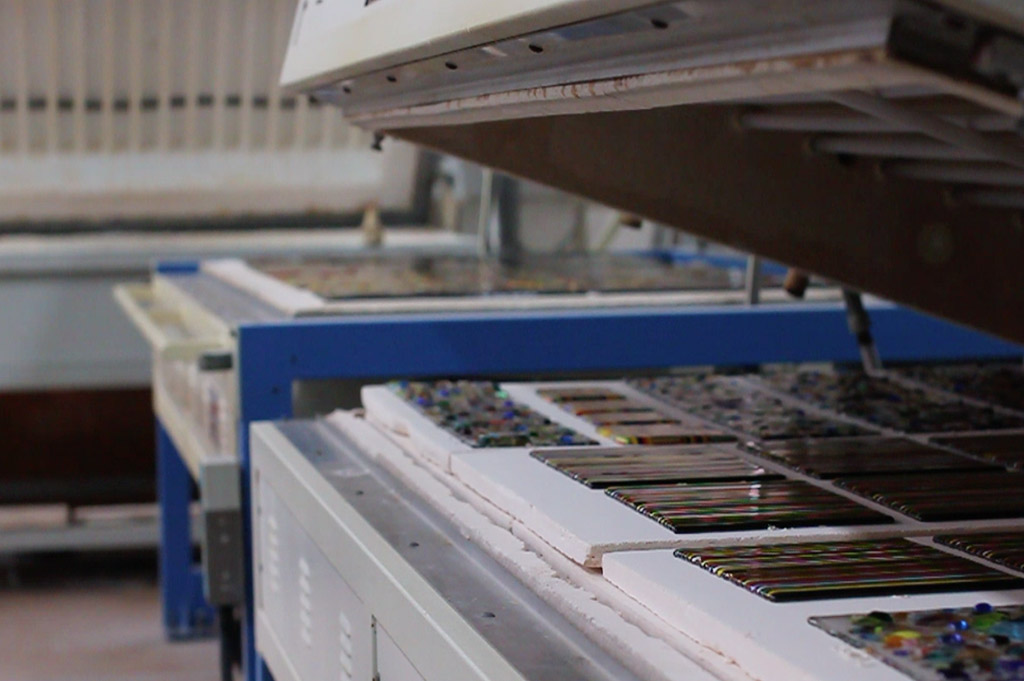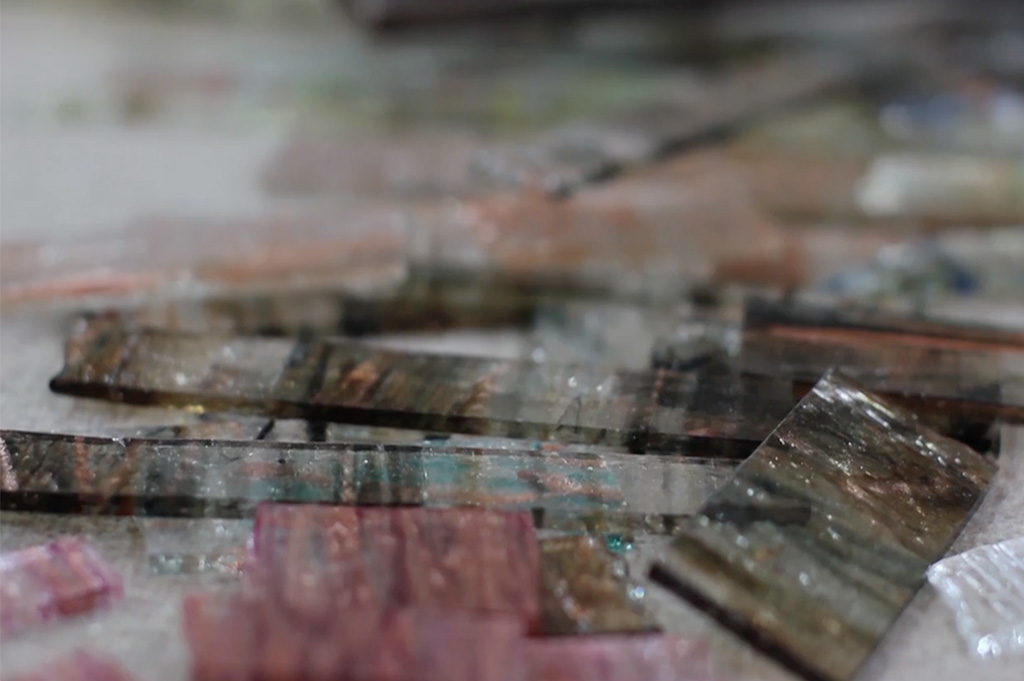Murano glass manufacturing
The artistic craftsmanship of Murano glass is, before becoming an art, a real technique. It is not studied in books but learned through experience, living the material in depth, learning to know its chemical characteristics and its technical functions. Because glass is made of silica that becomes liquid at high temperatures and the processing of the material is played out precisely at this moment: in the state of equilibrium and transition from liquid to solid.
There are two main categories of glass processing: primary and secondary. The first processing specifically uses sand, soda or raw glass, which are melted in specialized furnaces in order to obtain a vitreous mixture that will then be processed. The technique used by VéVé Glass to create its artistic Murano glass products belongs to the large group of secondary processing: the glass fusion technique.

Artistic glass fusion
The age-old technique of glass fusion consists of a procedure that has a lot to do with art: it consists of the combination of multicolored glass sections on a ceramic fiber plate and their subsequent fusion. This last step takes place in a special electric oven, thanks to which the various sections of glass melt and combine with each other in a riot of shapes, patterns and colors. The result is a multicolored and flamboyant glass fabric also called mosaic glass or murrina.
But the artistic flicker does not end here: the operation can be repeated several times by placing on the glass plate just created granules and sections of glass of different colors. Everything, once inserted in the furnace, will melt again creating colorful color games, three-dimensional decorations and games of shapes in light bas-relief. The result will be glass fusion objects with a surprising aesthetic impact.

Artistic glass fusion craftsmanship becomes Luxury
This technique, appreciated by architects and interior designers for its finesse and the innate value of furnishing any environment with simplicity, takes a turn in luxury design: elements such as precious gold and silver leaves can be added to the cut glass which, depending on the type of design chosen, can also be engraved or painted. The traditional Venetian murrine, the richness of the filigree reed, the zanfirico and the reticello can also be added to the glass fabric. But it doesn’t end here: the sheets can be integrated with the precious avventurina, the well-known bright green rough quartz, with transparent glass canes or glass paste, with the fine grains of ground colored glass and, again, with glass threads of many colors.
The process involved in the technique of glass fusion is slow, long and meticulous: the object thus composed and created is placed in special furnaces, where it will melt for about 24 hours. Even, for some very large and thick products, the melting time is longer and can reach four or five days.







